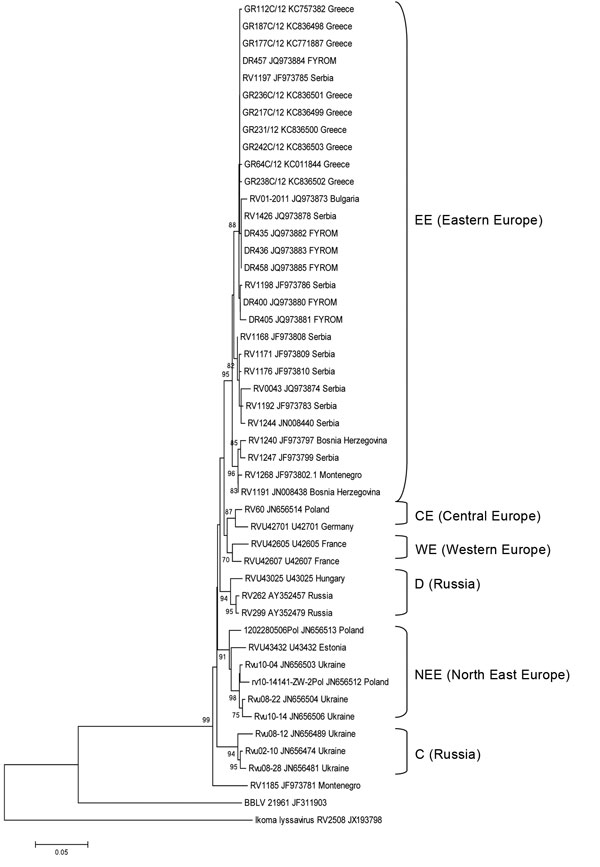Recurrence of Animal Rabies, Greece, 2012
Konstantia E. Tasioudi

, Peristera Iliadou, Eirini I. Agianniotaki, Emmanuelle Robardet, Emmanouil Liandris, Spiridon Doudounakis, Mirsini Tzani, Paraskevi Tsaroucha, Evelyne Picard-Meyer, Florence Cliquet, and Olga Mangana-Vougiouka
Author affiliations: Ministry of Rural Development and Food, Athens, Greece (K.E. Tasioudi, P. Iliadou, E.I.Agianniotaki, E. Liandris, S. Doudounakis, M. Tzani, P. Tsaroucha, O. Mangana-Vougiouka); WHO Collaborating Centre for Research and Management in Zoonoses Control, Malzéville, France (E. Robardet, E. Picard-Meyer, F. Cliquet); OIE Reference Laboratory for Rabies, Malzéville (E. Robardet, E. Picard-Meyer, F. Cliquet); European Union Reference Laboratory for Rabies, Malzéville (E. Robardet, E. Picard-Meyer, F. Cliquet); European Union Reference Laboratory for Rabies Serology, Malzéville (E. Robardet, E. Picard-Meyer, F. Cliquet); Technopôle Agricole et Vétérinaire, Malzéville (E. Robardet, E. Picard-Meyer, F. Cliquet)
Main Article
Figure

Figure. . Neighbor-joining phylogenetic tree comparing 9 isolates (7 red foxes, 2 dogs) from Greece with isolates from Former Yugoslav Republic of Macedonia, Bulgaria, and Serbia. All 9 samples were isolated in Greece during October 19, 2012–December 28, 2012. Representative isolates from central, western, and northeastern Europe and from Russia, extracted from GenBank, also were included in the phylogenetic tree. The phylogenetic analysis was based on analysis of the first 567 nt of the N gene by using the neighbor-joining method (Kimura 2-parameter model). Bootstrap values >70% were regarded as significant support of tree topology. The GenBank accession numbers of the sequences are included for each taxon within the tree, as is the country of origin. Abbreviations for the phylogenetic groups (NEE, C, D, SF) are indicated on the tree. Scale bar indicates nucleotide substitutions per site.
Main Article
Page created: January 17, 2014
Page updated: January 17, 2014
Page reviewed: January 17, 2014
The conclusions, findings, and opinions expressed by authors contributing to this journal do not necessarily reflect the official position of the U.S. Department of Health and Human Services, the Public Health Service, the Centers for Disease Control and Prevention, or the authors' affiliated institutions. Use of trade names is for identification only and does not imply endorsement by any of the groups named above.
